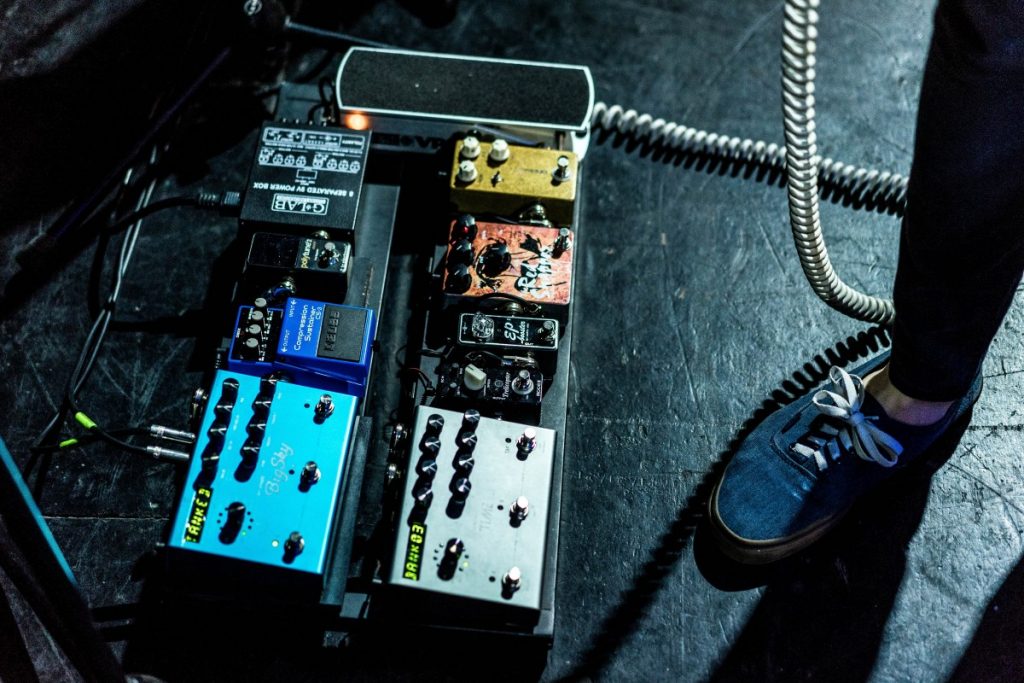The Importance Of The Guitar Pedal
aaamusic | On 27, May 2019

Everyone loves a great rock and roll guitarist. Rock music has gone through endless changes since its inception around the middle of the 20th century (the exact year is still widely debated), both in a stylistic sense and an aesthetic sense. We’ve seen the guitar move through blues and boogie-woogie to hard rock and glam, from punk rock and heavy metal to alternative rock and indie. Aside from arguably the vocals, the electric guitar has always been the primary focal point of rock music. However, an often overlooked part of a guitarist’s setup is their products for guitars – in many ways, the guitar itself is just one part of the overall package to produce that rock and roll sound we love.
So what types of products and accessories do guitarists carry on the road with them or kit out their recording studio with? Everything is important, from the Marshall amp that blasts out the distorted sounds, the handmade guitar strap, the custom pedalboards for guitars to the personalised guitar pick they strum the chords with.
Of course, a guitar doesn’t need to be electric to be used within rock and roll. Acoustic guitars are often used in rock ballads and unplugged gigs, sometimes even alongside an electric guitar. Often, going on a solo gig you might be in a need of looper pedals for guitars string since no one will accompany you with the playing. Getting one can be a good investment since loopers are versatile. According to the MusicCritic team, “They come in a variety of shapes, weights and with very different features. The sound from an acoustic guitar is dependent mainly on the air inside it and the vibrations from within the guitar, whereas the electric guitar sound comes from what is called the “signal” from pickups (i.e. on the journey to the amp), which can be distorted and altered and embellished via effects pedals. That said, in contemporary rock and pop music, the acoustic guitar is often also plugged into an amp and complemented with effect devices.
Different pedals work well for different sub-genres of rock and roll – each musician is different and has their own preference when it comes to accessories and guitar products. For example, Jimmy Hendrix – often referenced as the greatest guitarist of all time – made the “wah” effect famous using the Vox Wah, The Edge from Irish stadium rockers U2 uses digital delay excessively via the TC 2290 (no longer made), while Kurt Cobain from iconic grunge band Nirvana injected fuzz and heavy distortion into his band’s brand of alternative rock with the Boss DS-1 pedal.
Today, rock and roll is becoming heavily influenced by electronic music, something that was initially made popular in the 1980s after the rise of krautrock and post-punk in the 1970s. More and more musicians are favouring colouring their guitar sound with digital effects, to the point that often the old school guitar sounds that used to define the genre are more or less eradicated. One of the most popular “rock” bands currently working today is The 1975, who make a polished pop and rock crossover which has resonated with “generation playlist”. They use so many pedals that its hard to keep count: one song can use multiple, such as “Love Me” which features a Electro-Harmonix Micro Synth, a Klon and a Roland CE-1.
Everything will come full circle. This may be the era of digital rock, but just round the corner will be another resurgence of simple, old school rock and roll. And hidden from view, yet totally essential, will be the guitar effects pedal.

